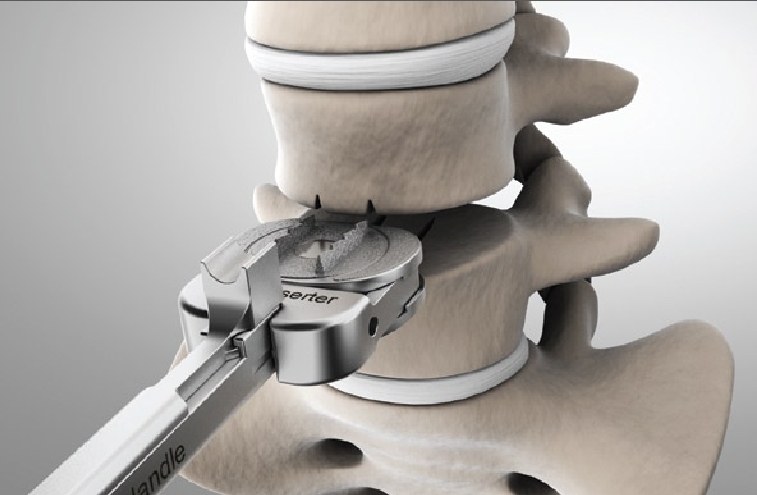doi: 10.3390/medicina58020277.
Affiliations
Affiliations
- 1 Division of Spine Surgery, Department of Trauma and Orthopedic Surgery, University Medical Center Hamburg-Eppendorf, 20246 Hamburg, Germany.
- 2 Clinic for Trauma, Orthopedics and Plastic Surgery, University Medical Center Göttingen, Georg-August-Universität, 37075 Göttingen, Germany.
- 3 Mildred Scheel Cancer Career Center HaTriCS4, University Medical Center Hamburg-Eppendorf, 20246 Hamburg, Germany.
- 4 Division of Orthopedics, Department of Trauma and Orthopedic Surgery, University Medical Center Hamburg-Eppendorf, 20246 Hamburg, Germany.
Free PMC article
Item in Clipboard
Leon-Gordian Koepke et al.
Medicina (Kaunas).
.
Free PMC article
Display options
Format
doi: 10.3390/medicina58020277.
Affiliations
- 1 Division of Spine Surgery, Department of Trauma and Orthopedic Surgery, University Medical Center Hamburg-Eppendorf, 20246 Hamburg, Germany.
- 2 Clinic for Trauma, Orthopedics and Plastic Surgery, University Medical Center Göttingen, Georg-August-Universität, 37075 Göttingen, Germany.
- 3 Mildred Scheel Cancer Career Center HaTriCS4, University Medical Center Hamburg-Eppendorf, 20246 Hamburg, Germany.
- 4 Division of Orthopedics, Department of Trauma and Orthopedic Surgery, University Medical Center Hamburg-Eppendorf, 20246 Hamburg, Germany.
Item in Clipboard
Display options
Format
Abstract
Background and Objectives: In osteoporotic fractures of the spine with resulting kyphosis and threatening compression of neural structures, therapeutic decisions are difficult. The posterior vertebral column resection (pVCR) has been described by different authors as a surgical treatment in a single-stage posterior procedure. The aim of this study is to evaluate midterm outcomes of patients treated by pVCR due to severe osteoporotic fractures. Materials and Methods: Retrospective data analysis of all the patients treated for osteoporotic fractures by pVCR from 2012-2020 at two centers was performed. Demographic data, visual analog scale (VAS), Frankel scale (FS), Karnofsky performance status (KPS), radiological result and spinal fusion rates were evaluated. Results: A total of 17 patients were included. The mean age was 70 ± 10.2 y. The mean VAS decreased significantly from 7.7 ± 2.8 preoperatively to 3.0 ± 1.6 at last follow-up (p < 0.001) and the segmental kyphosis decreased from 29.4 ± 14.1° to 7.9 ± 8.0° (p < 0.001). The neurologic function on the FS did not worsen in any and improved in four of the patients. The median KPS remained stable over the whole observation period (70% vs. 70%). Spinal fusion was observed in nine out of nine patients who received CT follow-up >120 days after index surgery. Conclusions: This study showed that pVCR is a safe surgical technique with few surgical complications and no neurological deterioration considering the cohort. The patients’ segmental kyphosis and VAS improved significantly, while the KPS remained stable.
Keywords:
geriatrics; kyphosis; osteoporosis; osteoporotic fractures; spinal fusion; spine.
Conflict of interest statement
The authors declare no conflict of interest regarding this article.
Figures

Figure 1
Key steps of the operative…
Figure 1
Key steps of the operative technique. ( a ) Scheme of a high-grade…
Figure 1
Key steps of the operative technique. (a) Scheme of a high-grade osteoporotic spinal fracture with consecutive kyphosis and spinal canal stenosis. (b) The fractured vertebral body was surgically removed in a posterior-only procedure (c) Harms meshes are inserted in the created cavity as a replacement of the resected vertebral body. (d) Using the Harms meshes as a hypomochlion, successive compression and shortening of the posterior spinal elements and, herewith, the lordosation maneuver is carried out.

Figure 2
( a ) Solid bony fusion. This figure shows the typical solid bony…
Figure 2
(a) Solid bony fusion. This figure shows the typical solid bony fusion between the cranial and caudal adjacent vertebral body, bridging the harms mesh. Usually, the bony fusion occurs bilaterally in a bracketlike manner. (b) Typical conventional X-ray after posterior only vertebral column resection in anteroposterior (left) and lateral plane (right): Augmented pedicle screws were inserted three levels above and below the target vertebra. The target vertebra was resected in a posterior-only approach. Harms meshes were inserted. The spine was relordosed and the affected segment compressed. Spondylodesis was established using autologous bone.
References
-
-
Nevitt M.C., Ettinger B., Black D.M., Stone K., Jamal S.A., Ensrud K., Segal M., Genant H.K., Cummings S.R. The association of radiographically detected vertebral fractures with back pain and function: A prospective study. Ann. Intern. Med. 1998;128:793–800. doi: 10.7326/0003-4819-128-10-199805150-00001.
–
DOI
–
PubMed
-

